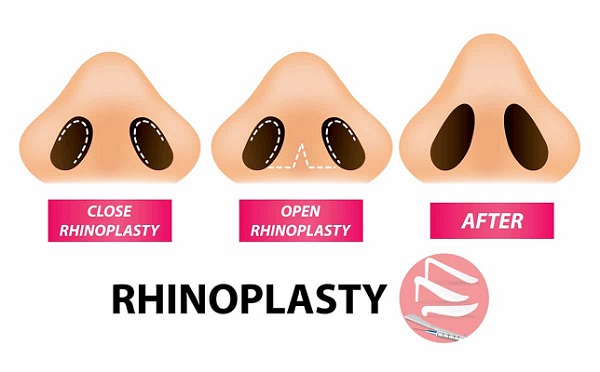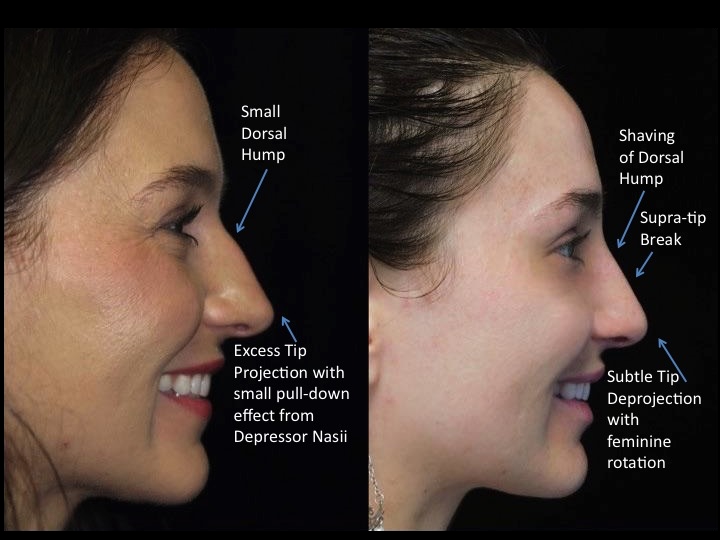Closed Rhinoplasty Overview
by Admin
Posted on 06-12-2024 09:30 PM

What is Closed Rhinoplasty?
Closed rhinoplasty is a type of nose surgery where incisions are made inside the nostrils, leaving no visible scars. This approach is often preferred by patients who want to enhance their nose's appearance without the aesthetic drawbacks of external scars. By keeping the incisions hidden, many feel more comfortable and confident post-surgery.
This technique allows surgeons to reshape the nasal structure while minimizing recovery time. Patients often wonder if this method is as effective as the open approach. The answer is yes, as closed rhinoplasty can achieve excellent results depending on the individual’s unique needs.
Benefits of Closed Rhinoplasty
There are several reasons why patients might choose closed rhinoplasty over other techniques. First, the absence of visible scars is a significant advantage. Second, the recovery period is often shorter, allowing individuals to return to their daily activities more quickly. Third, it can result in less swelling, which is a common concern after any surgery.
- Minimal scarring
- Shorter recovery time
- Less postoperative swelling
Who is a Good Candidate?
Not everyone is an ideal candidate for closed rhinoplasty. Typically, those with mild to moderate nasal deformities are the best fit. If you have a more complex issue, such as severe breathing problems or significant structural irregularities, an open rhinoplasty might be more suitable.
It's essential to have realistic expectations about the results. A detailed consultation with a qualified surgeon can help you determine if closed rhinoplasty is right for you. Remember, your unique nose shape and personal goals will influence the decision.
The Procedure Explained
During a closed rhinoplasty, the surgeon begins by administering anesthesia to ensure the patient is comfortable. Once the patient is ready, the surgeon makes incisions inside the nostrils. Through these incisions, they can access and reshape the nasal structures, including the bone and cartilage.
The entire procedure usually lasts between one to two hours, depending on the complexity of the case. After reshaping, the surgeon closes the incisions and places a splint on the nose to help maintain its new shape. Patients can generally go home the same day!
Recovery Process
Recovery from closed rhinoplasty is generally swift. Most patients experience swelling and bruising, but these symptoms typically resolve within a few weeks. It’s crucial to follow post-operative care instructions provided by your surgeon, including avoiding strenuous activities.
- Rest and keep your head elevated
- Apply ice packs to reduce swelling
- Follow up with your surgeon as scheduled
While the initial swelling diminishes, it can take up to a year for the final results to be fully visible. Patience is key during this recovery phase.
Risks and Considerations
Like any surgical procedure, closed rhinoplasty comes with potential risks. These can include complications like infection, excessive bleeding, or dissatisfaction with the aesthetic outcome. However, choosing a qualified surgeon can significantly reduce these risks.
Discussing all concerns with your surgeon beforehand is essential. They can provide detailed information about the risks, expected outcomes, and how to prepare for surgery. This ensures that you're making an informed decision every step of the way.
Final Thoughts
In conclusion, closed rhinoplasty can be a fantastic option for those looking to enhance their nose without visible scars. Its various benefits, such as shorter recovery time and less swelling, make it appealing to many. If you're considering this procedure, consult with a qualified surgeon to determine if you’re a good candidate.
Ultimately, the goal is to achieve a result that boosts your confidence and suits your facial features. With the right approach, closed rhinoplasty can help you achieve that goal!
Frequently Asked Questions about Closed Rhinoplasty
- What is closed rhinoplasty?
- Closed rhinoplasty is a type of nose surgery where incisions are made inside the nostrils, leaving no visible scars. It allows for reshaping of the nasal structure while minimizing recovery time.
- What are the benefits of closed rhinoplasty?
- Benefits include minimal scarring, shorter recovery time, and less postoperative swelling compared to other techniques.
- Who is a good candidate for closed rhinoplasty?
- Typically, those with mild to moderate nasal deformities are ideal candidates. More complex issues may require an open rhinoplasty.
- How long does the closed rhinoplasty procedure take?
- The entire procedure usually lasts between one to two hours, depending on the complexity of the case.
- What is the recovery process like after closed rhinoplasty?
- Recovery is generally swift, with most swelling and bruising resolving within a few weeks. Following post-operative care instructions is crucial.
- What are the risks associated with closed rhinoplasty?
- Potential risks include infection, excessive bleeding, and dissatisfaction with the aesthetic outcome. Choosing a qualified surgeon can help reduce these risks.
- How long does it take to see the final results of closed rhinoplasty?
- While initial swelling diminishes within weeks, it can take up to a year for the final results to be fully visible.
